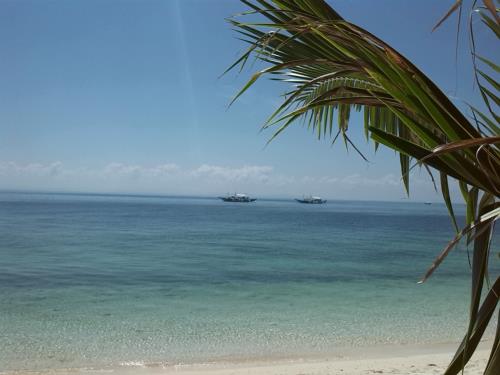
Philippine Liveaboards Expand Destinations.
In the recent past, the
Philippine Liveaboard Dive industry was limited to 3 months of diving the Tubbataha reef. Tubbataha Reefs Natural Park is a 97,030-hectare Marine Protected Area (MPA) in Palawan, the westernmost Philippine province. It is located 150km southeast of Puerto Princesa City, at the heart of the Coral Triangle, the global center of marine biodiversity. Situated in the middle of the Sulu Sea, the dive season is only three months. Other than that season, All but one became charter boats in Puerto Princesa City and given the poor sea conditions that keeps the dive season short, I am sure few charters.
Philippine liveaboards Diving Malapascua Island.
In the last few years, supported by the growth of the scuba diving industry in the Philippines, the number of liveaboards operating in the Philippines was greatly increased and many are operating year round. Twelve companies operating fifteen vessels will dive the Tubbataha Reefs season. Half of them will operate year round diving other destinations in the country. The expanding of the Philippine liveaboard industry will also be a great benefit to local dive operations. Just like cruise ship passengers returning to spend a week in their favorite port of call, divers will come back to the areas that they liked the best.
The trips that include Malapascua Island, I believe, might be one of the best itineraries in the world for a diving liveaboard. Philippine Siren and Solitude One both have routes that include Cebu and Malapascua Island, While Seadoors includes a Malapascua and Leyte trip
The first question that you might consider is what so special about the island. The Philippines has over 7,000 islands most small and lightly inhabited. About a 20 minute boat ride from the island is a shoal that rises up from more that 200 meters to as close as 18 meters to the surface. Monad Shoal is about the same size as Malapascua island and has a number of cleaning stations on it. Cleaning stations that Thresher sharks love to visit. Monad Shoal is currently the only known location in the world where sighting are almost guaranteed. While the Thresher sharks are the headliners of the local diving, there is a great variety of other diving as well.
Just off shore from the island’s lighthouse is the, well, the lighthouse reef. It is a shallow reef that is used as an open water training site by some dive centers. The beautiful coral gardens make for a wonderful relaxing dive. As wonderful the reef is for training, it is a very special sunset dive. The reef is the home of a vast number of Mandarinfish. Generally considered the most colorful of the reef fish they are also known for their exotic mating dances. Starting around twilight the males start their dances hoping to attract a female to dance with them.
There are some dive sites that are visited from Malapascua Island on day trips, but they require long boat rides. Gato island is a special two dive trip that most dive center make a few times a week. The area is a hour away and is known for its abundant corals and sponges as well as a great place to see sleeping white tip sharks and sea snakes. Advanced divers looking for something different will find it here as well. A tunnel runs under the island that advance divers can transverse. Two dives is not enough for such a trip and the liveaboards provide a whole day to explore this island.

Beyond Gato Island are two outstanding wreck dives. MV Doña Marilyn sits in less than 30 meters of water, she was a passenger ferry lost during a typhoon in 1988 causing the death of 389 passengers. The Taplion Wreck is a WWII Japanese freighter also in less than 100 feet of water. From the island, these are early and long days to get in just two dives. The liveaboards provide a much better experience.
It is not just at the northern tip of the island of Cebu that makes this such a wonder trip. The Cebu and Malapascua Island trips start at one port and finish in the other. By land you can travel from one to the other in less than three hours by car and four by bus. The liveaboards take from a week to eleven days, they do not go the shortest distance but around the island of Cebu. The trip includes traveling the Tanton strait that separates Negros and Cebu islands. The strait is know for its great drift dives, large pelagic species, whale sharks, turtles, rays and a sardine run. Fourteen species of whales and dolphins call the strait home as well as five species of marine turtles. Moalboal and nearby Pescador Island are located in the strait and are one of the destinations.
Dauin and the Apo Island is another destination visited. Located at the southern tip of Negros, they are world class destinations. For those not familiar with the diving here, Apo Island Negros is a half hour boat ride off from Dauin and has some of the best diving in the Philippines as well as a great selection of dive resorts. However, do not confuse it with Apo Island located within the Apo Reef National Marine Park in Occidental Mindoro. That island is bare.
The liveaboard trips also include stops in Bohol, which is another great diving destination.
If you are looking to dive the best sites over a range of destinations, this may be exactly what you want.
Vsit here for more information on
the Philippine Liveaboard Dive Industry and liveboard information.
Scuba diving nomad